Insecticide For Ash Borer
Emerald ash borer (EAB) is a beetle that attacks, and can ultimately kill, ash trees (Fraxinus species). This includes species of trees that are very commonly planted in Colorado, particularly green ash and white ash, including the popular cultivar ‘Autumn Purple’.
Trees are damaged when the immature stage of the insect, known as a flatheaded borer, develops in the living tissues (cambium) present just under the bark. The tunneling by the insect reduces the ability of the tree to move water and nutrients, producing a progressive weakening of the plant. As the number of these wounds increase over time effects on tree growth become more apparent. Damage usually begins at the top of the tree, and this may result in a thinning of the leaf canopy, as smaller leaves are produced. Twigs and branches may die and in later stages of an infestation the insect may be found in high numbers in the main trunk.
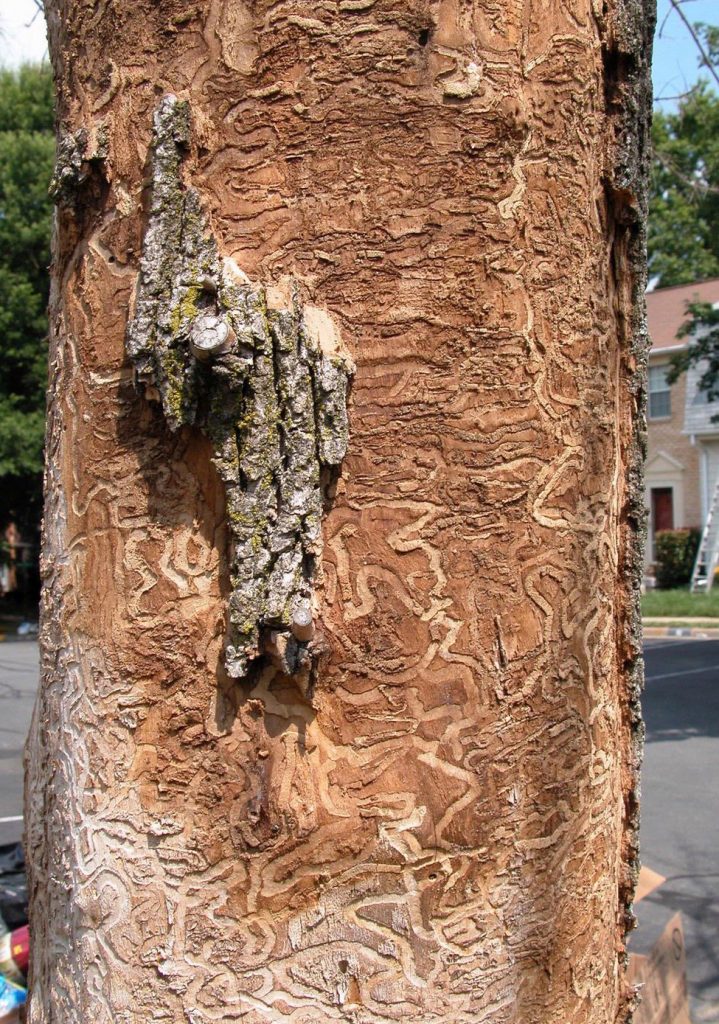
Photograph of the larva courtesy of David Shetlar, The Ohio State University. Photograph of the ash trunk with EAB tunneling courtesy of Eric Day, Virginia Polytechnic and State University.
Once emerald ash borer has begun to infest a tree the injury it causes will increase over time so that the tree will ultimately be killed, unless treated with insecticides. The length of time it will take from the day a tree is first colonized by emerald ash borer until it will die will normally take several years, but the speed of tree decline will depend on many factors. These include the original health of the tree, weather, and the number of emerald ash borers developing in nearby trees.
Insecticides Used to Control Emerald Ash Borer
Individual trees can be protected from emerald ash borer using certain insecticides. These insecticides can be used preventively, applied when the insect is first detected near the neighborhood. Most of the emerald ash borer insecticides can also be used effectively a couple of years after emerald ash borer has first colonized a tree, when populations of the insect are still low and tree damage is minimal. One of the insecticides, emamectin benzoate, has been demonstrated to often allow tree recovery as a “rescue treatment” even when emerald ash borer injuries have begun to produce as much as a 30 percent reduction visible thinning of the leaf canopy of the ash tree.
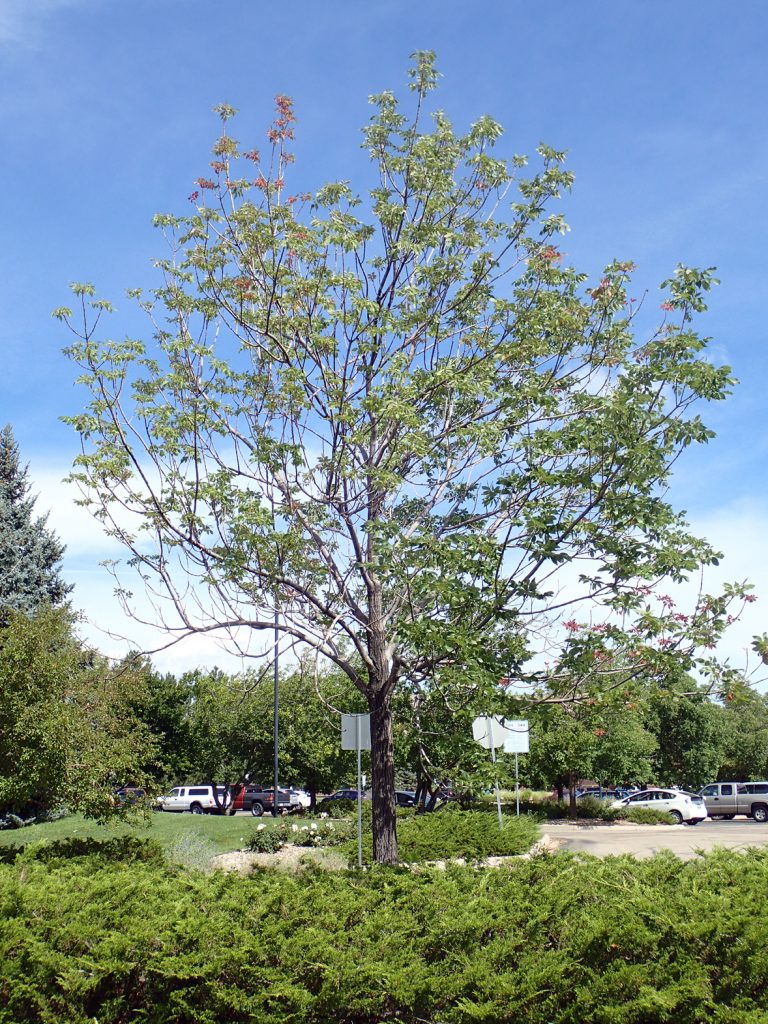
Emerald ash borer is controlled by the use of certain systemic-types of insecticides that can be taken into the tree in some manner and will then move to areas where it can kill adults (leaves) or the flatheaded borer larvae (cambium). This is a different approach than is used for many other wood boring insects. Most wood borers, and bark beetles, are controlled using preventive insecticide sprays applied to the bark that kill the insects after egg hatch before they enter the tree. Emerald ash borer is not effectively controlled in this manner, but certain systemic insecticide can be very effective that kill either the adults as they feed on leaves and/or the developing larvae underneath the bark.
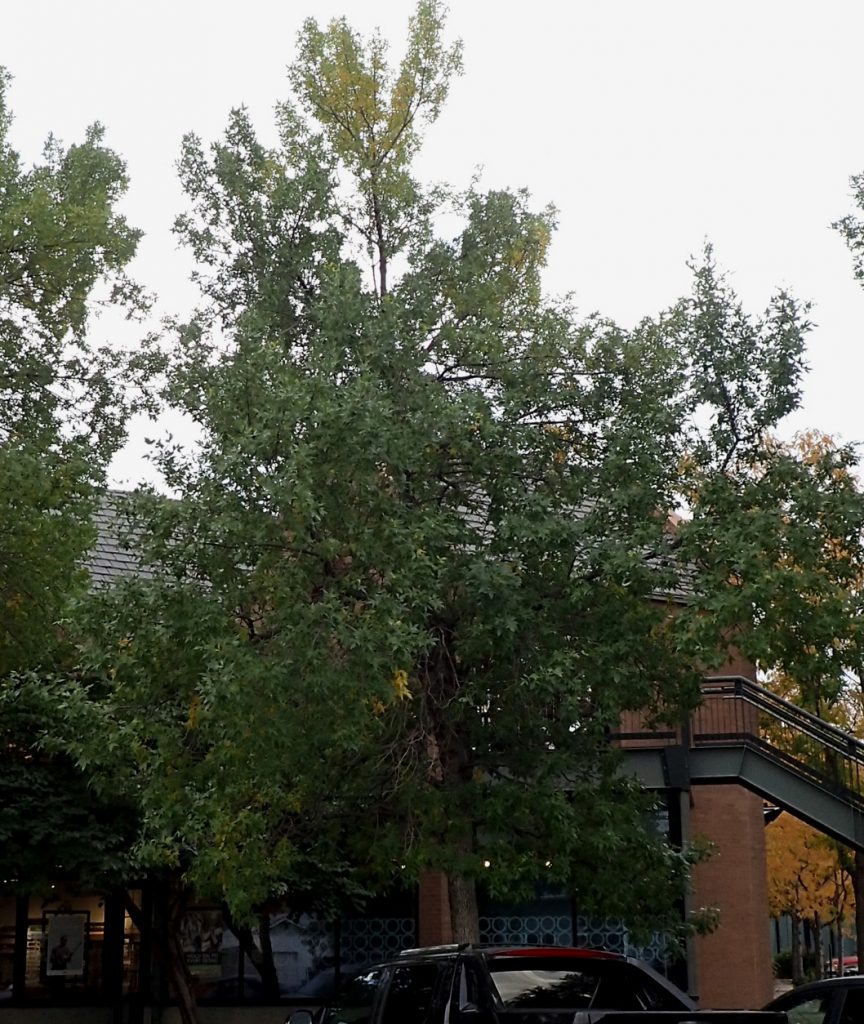
There are four active ingredients used to control emerald ash borer: imidacloprid, dinotefuran, emamectin benzoate, and azadirachtin.
Imidacloprid. Imidacloprid is the most easily applied and usually least expensive of the insecticides used to control emerald ash borer. It is the only EAB insecticide that can be found for sale at retail outlets (nurseries, hardware stores, box stores).
Imidacloprid is normally applied as a treatment to the soil that is then picked up by the roots of the tree. This can be done as a drench, mixed with several gallons of water, poured onto the surface around the base of the trunk of the tree. If mulch is present around the tree this must be removed prior to application. This treatment cannot be made if flowering plants are present around the base of the tree, as the insecticide may move into the nectar of plants exposing it to pollinating insects. Alternatively, imidacloprid can be injected into the soil by a professional, using special equipment, with injections made at multiple points under the canopy of the tree.
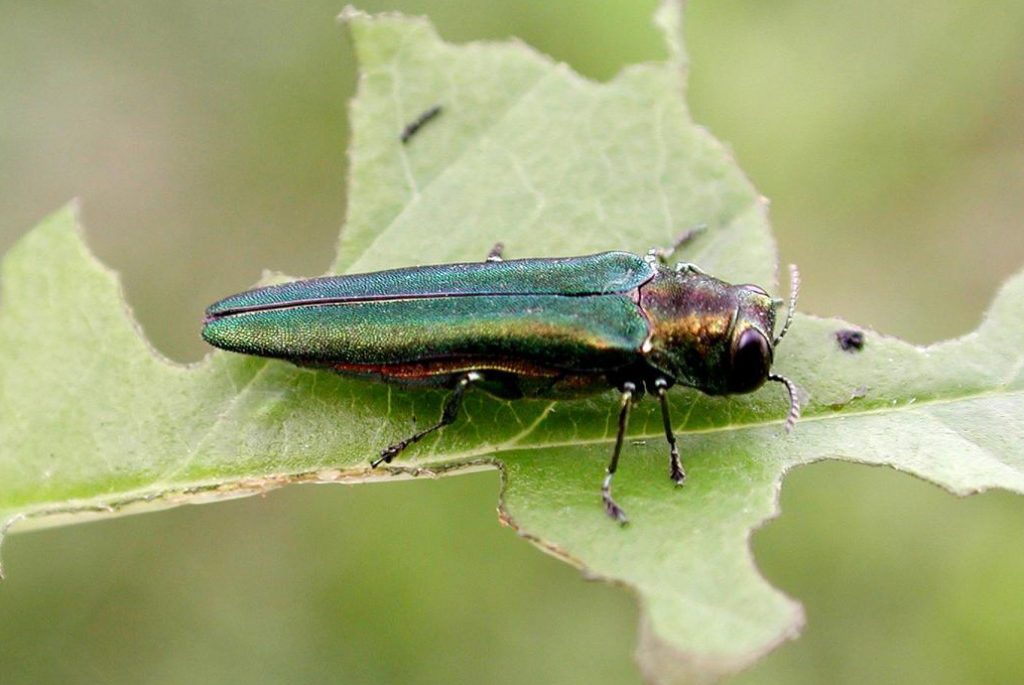
Whether applied as a soil drench or injected, the soil must remain moist to allow the roots of the tree to pick up and to then transport the insecticide through the tree. Immediately after application the treated area should be watered and continued watering may be necessary to keep the soil moist for two to three weeks after application. Compared to other EAB insecticides, imidacloprid moves slowly into the tree and can be expected to take two or three weeks to be present in high enough levels to kill emerald ash borer. If soil remains dry after application, this method of treatment will be ineffective.
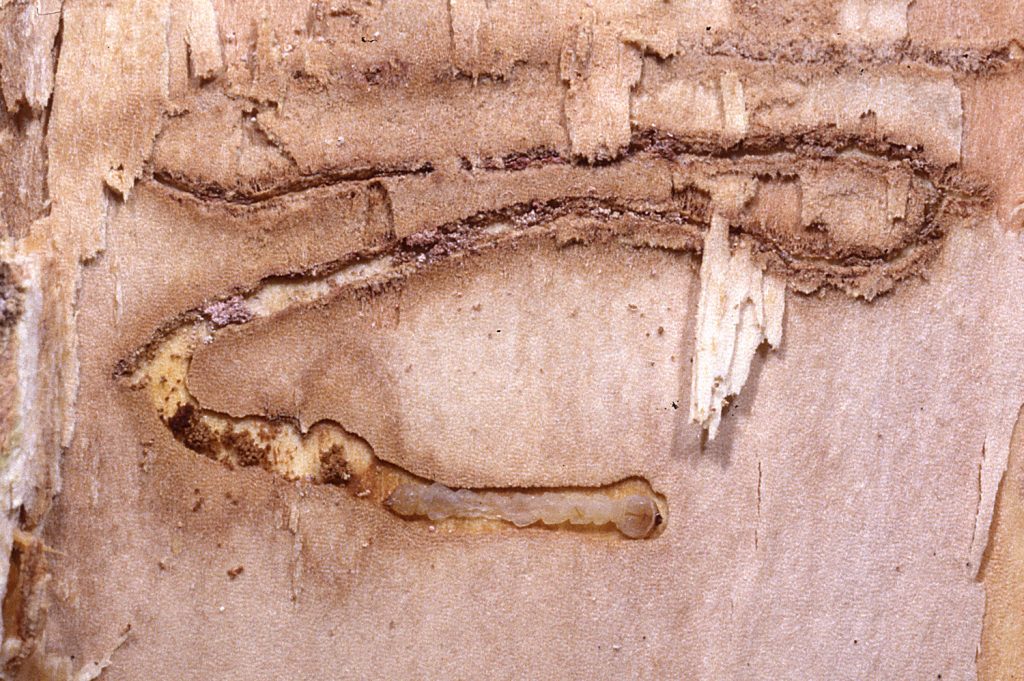
The amount of imidacloprid to apply for EAB control is related to the size of the tree, as it is for all of the EAB insecticides. However, in large diameter trees that support a very large canopy, rates need to be further increased. The rate of imidacloprid must be doubled in trees with a diameter of over 15 inches to provide control. This higher rate of use is not allowed on retail formulations of imidacloprid.
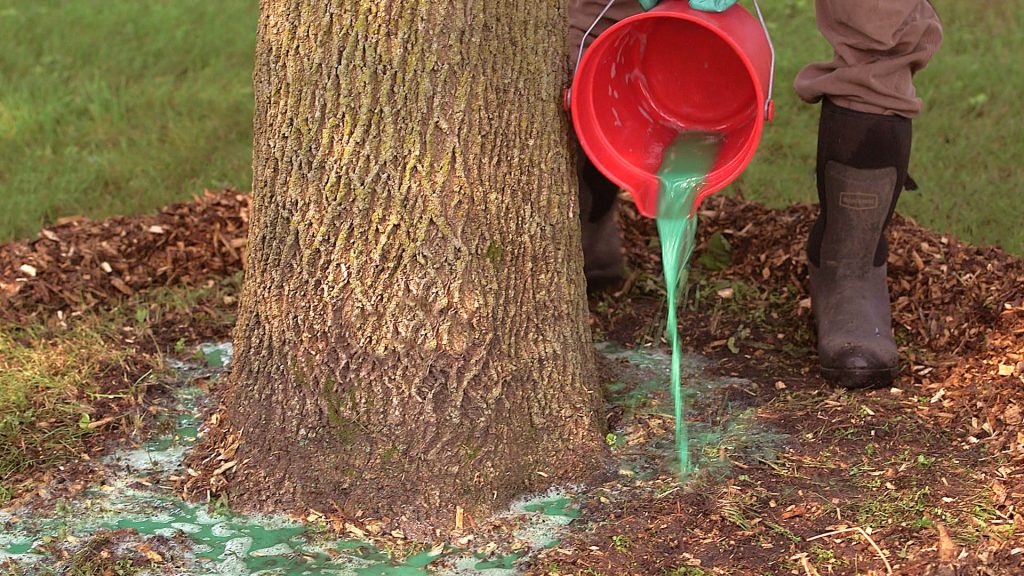
Imidacloprid will provide control for a single season. Treatments are best applied in spring shortly after bud break so that it will be present in leaves when newly emerged adults first begin to feed on leaves, before they begin laying eggs. Adults can normally be expected to begin to emerge from trees in mid-late May and adults will continue to emerge from trees into early summer.
Dinotefuran. Dinotefuran is most often used as a spray on the trunk. This insecticide is more mobile in plants than are the other EAB insecticides and is able to move through the bark and then move rapidly through the tree. Dinotefuran can also be applied to the soil in the same manner as imidacloprid, but is considerably more expensive and control is similar by this method.
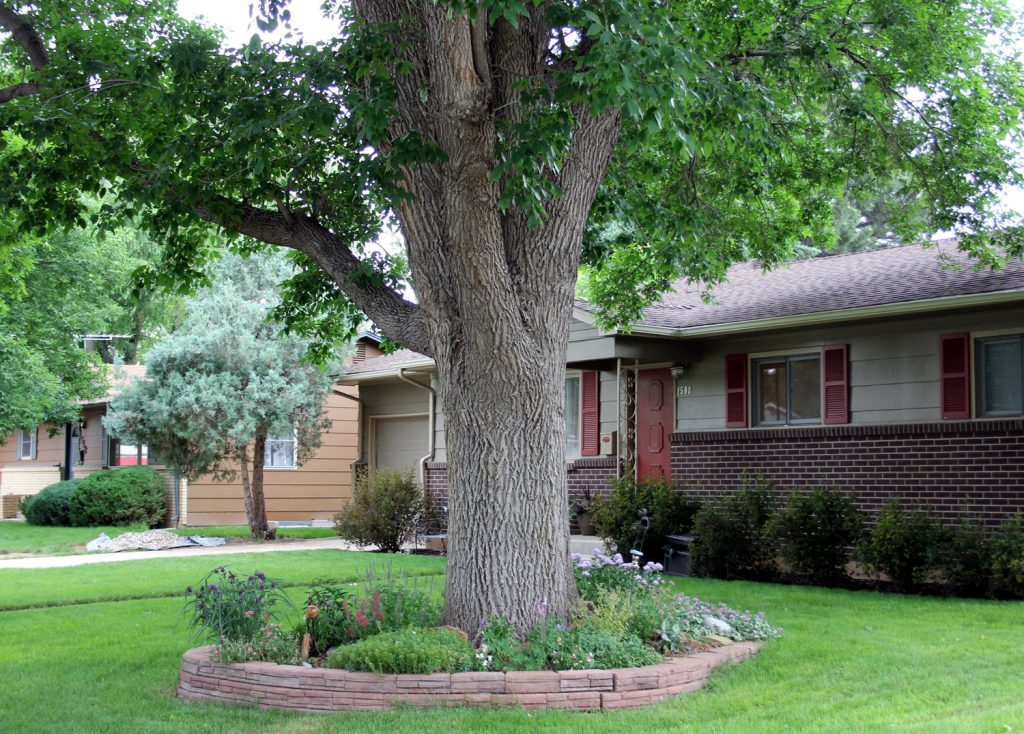
https://www.youtube.com/watch?v=1biFq0fKbKo
Dinotefuran is not available through retail outlets and it is complicated to apply it correctly at the proper rate as a trunk spray. The insecticide is mixed with water and the amount of the spray mixture needed will vary by the size of the tree. Professional application is highly recommended.
Dinotefuran will provide control for a single season. Treatments are best applied in spring when trees are mostly leafed out about a month following bud break. Since it is more mobile in the plant, dinotefuran can effectively move into leaves more rapidly than imidacloprid, usually within a week, where it will be able to kill adult beetles. However, if applied too early it may not remain in sufficient concentration when it is needed to kill developing larvae under the bark. As for all of the insecticides used for EAB control, following application the soil must be moist enough for the plant to be actively moving water. Supplemental irrigation is needed if the site where the tree roots are growing is droughty.
Insecticide For Ash Borer
- Emerald ash borer wounds ash trees by tunneling areas under the bark. When wounds become extensive, trees show symptoms of decline and, ultimately, are usually killed.
- Several types of insecticide applications can control emerald ash borer.
- Emerald ash borer insecticides move systemically in plants and are typically applied as either soil drenches, trunk sprays or direct injections into the trunk, depending on product.
- Insecticides can prevent new injuries by emerald ash borer and if damage to the tree caused by the insect is not too advanced, trees can recover when insecticides are used.
List Of Insecticide For Ash Borer
- For use on outdoor trees and shrubs, including listed fruit and nut trees
- Controls aphids, emerald ash borers, Japanese beetles, birch leaf miners and other listed insects for up to 12 months with one application
- Insecticide absorbed through the roots and into the plant for protection that won’t wash off
- Mix 1.47-percent Imidacloprid concentrate with water and pour evenly around the base of the tree or shrub
- For use on outdoor trees and shrubs, including listed fruit and nut trees
- Controls aphids, emerald ash borers, Japanese beetles, birch leaf miners and other listed insects for up to 12 months with one application
- Insecticide absorbed through the roots and into the plant for protection that won’t wash off
- Mix 1.47-percent Imidacloprid concentrate with water and pour evenly around the base of the tree or shrub
- Mix 1.47-percent Imidacloprid concentrate with water and pour evenly around the base of the tree or shrub
Additional Info :
| Item Dimensions | |
| Height | 11.88 Inches |
| Width | 7.5 Inches |
| Length | 4.25 Inches |
| Weight | 8.6 Pounds |
- Acecap Systemic Insecticide Implants, contains environmentally acceptable acephate
- Each implant is 3/8-inch diameter – For 4in. spacing, use 3/8in. diameter drill bit to drill 1-1/4in. deep from the cambium surface
- Do not use for trees less than 3in. DBH (Diameter at Breast Height, about 4ft. from ground)
- Testing proves that Acecap implants prevent and control Emerald Ash Borer
- Do not use on fruit, nut, or syrup trees that will be consumed or sold – Use on ornamental trees
Additional Info :
- ACECAP Systemic Tree Implants 98.9% Ace hate 10 Pack 12ea Easy to use systemic insecticide implants for control of destructive pests of ornamental trees
- Applied in spring, the treatment will provide season-long control of many insects, including Aphids, Bagworms, Borers, Budworms, California Oak worm, Cankerworm, Case bearer, Elm Leaf Beetle, Gypsy Moth etc.
- The sap flow dissolves the chemical and carries it throughout the tree in 4 to 5 days. Ten implants will effectively treat up to a 14″ trunk diameter
- Systemic insecticide tree implants
- Contains 99 percent acephate, a highly effective systemic insecticide for broad spectrum insect control
- Acecaps are registered for use against aphids, bagworms, bronze birch borer, gypsy moth, tent caterpillar, wooly adelgid, and many more
- Easy to install; 5 implants per pack
- Provides readers with practical, easy-toaccomplish tips and tasks
Additional Info :
| Color | Brown |
- No chemical exposure to applicator or the environment
- Season-long control of tree pests, up to two seasons in evergreen trees
- 10 implants will treat a 14 inch diameter trunk
- Tools required to treat: tape measure, cordless drill with 3/8 inch bit, hammer and bolt or dowel rod
- Ready to install – no measuring of chemicals
Additional Info :
| Color | brown |
| Item Dimensions | |
| Height | 0.38 Inches |
| Width | 1.25 Inches |
| Length | 0.38 Inches |
| Weight | 0.1 Pounds |
- Research shows that Imicide is one of the most effective preventative and multi-season control treatments for the Emerald Ash Borer as well as other labeled insects.
- Imicide is used by the USDA , state and city governments in prevention and eradication programs for Asian and Citrus Longhorned Beetles, with over 500, 000 trees successfully protected
- Since 2000, the USDA lists Imicide as the only trunk injection product in their APHIS Emergency and Domestic Program for control of the Asian Longhorned Beetle.
- Exceptionally long residual control, second season protection, preventative treatment, broad spectrum,
- Completely enclosed, minimal risk application method that starts controlling infestation as soon as one to seven days following application.
Additional Info :
| Item Dimensions | |
| Height | 2 Inches |
| Width | 8 Inches |
| Length | 10 Inches |





